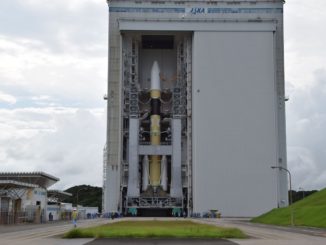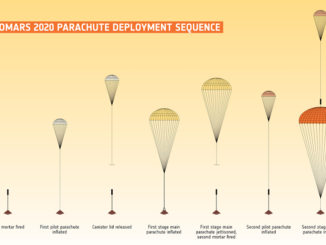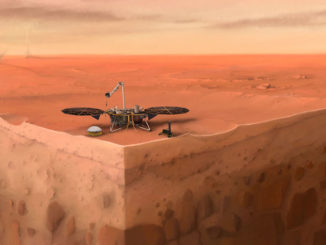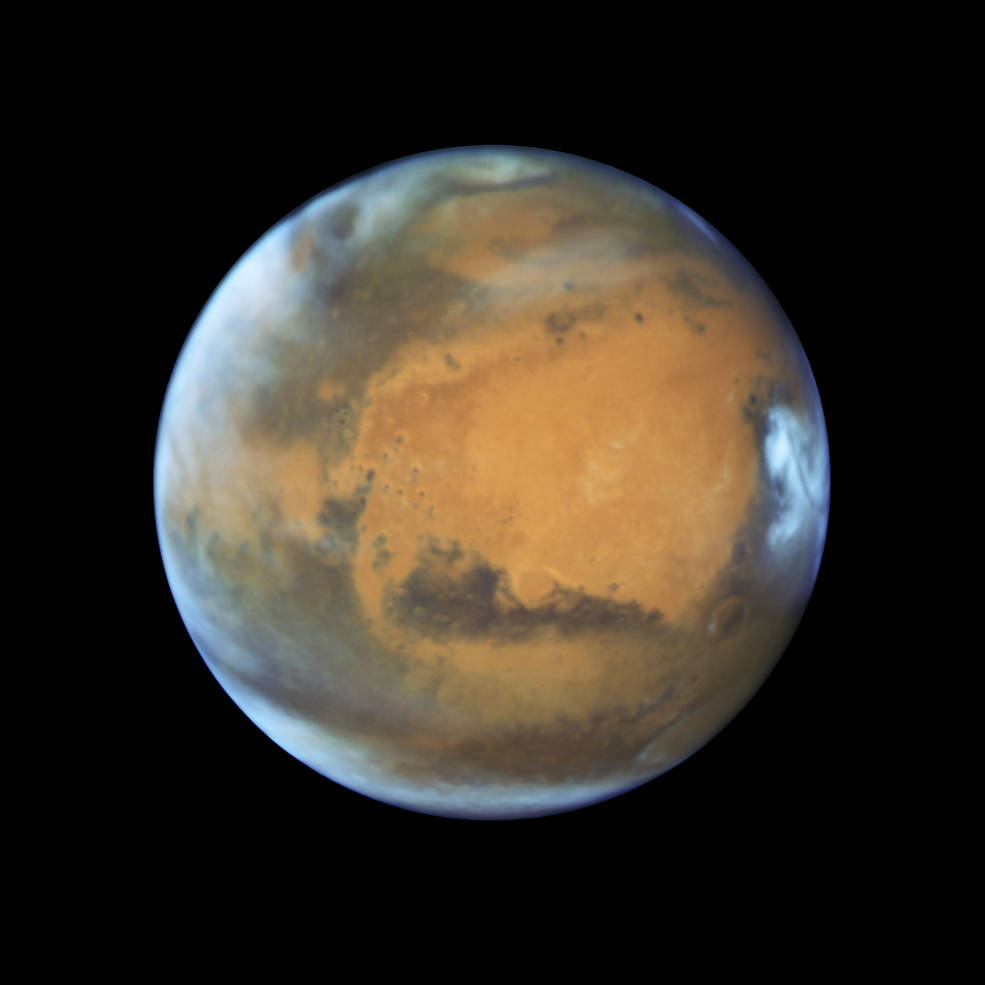
If you look at the night sky this month, chances are you can’t miss Mars rising in the east like an orange beacon each evening.
Scientists recently aimed the Hubble Space Telescope at the red planet, producing a dazzling image of bright Martian ice caps, rust-colored landscapes and clouds hanging in its rarefied atmosphere.
Hubble’s Wide Field Camera 3 took an image of Mars on May 12, when the red planet was about 50 million miles (80 million kilometers) away from Earth.
The orbiting observatory’s view of Mars shows large-scale geologic features, ancient impact basins, polar ice caps and clouds stretching thousands of miles across, blocking some regions from Hubble’s gaze.
The expansive orange feature at the center of the image is Arabia Terra, a vast upland region pockmarked with craters and river channels. Scientists believe it is one of the oldest geologic regions on the planet.
To the right of Arabia Terra, reflective white clouds conceal the summit of Syrtis Major, a towering inactive shield volcano, according to NASA. Seventeenth-century astronomers mapped this region through telescopes, using it to help time the length of a Martian day to approximately 24 hours and 37 minutes.
Huygens Crater and Hellas Planitia basin, the scars of asteroid impacts, lie to the south of Syrtis Major.
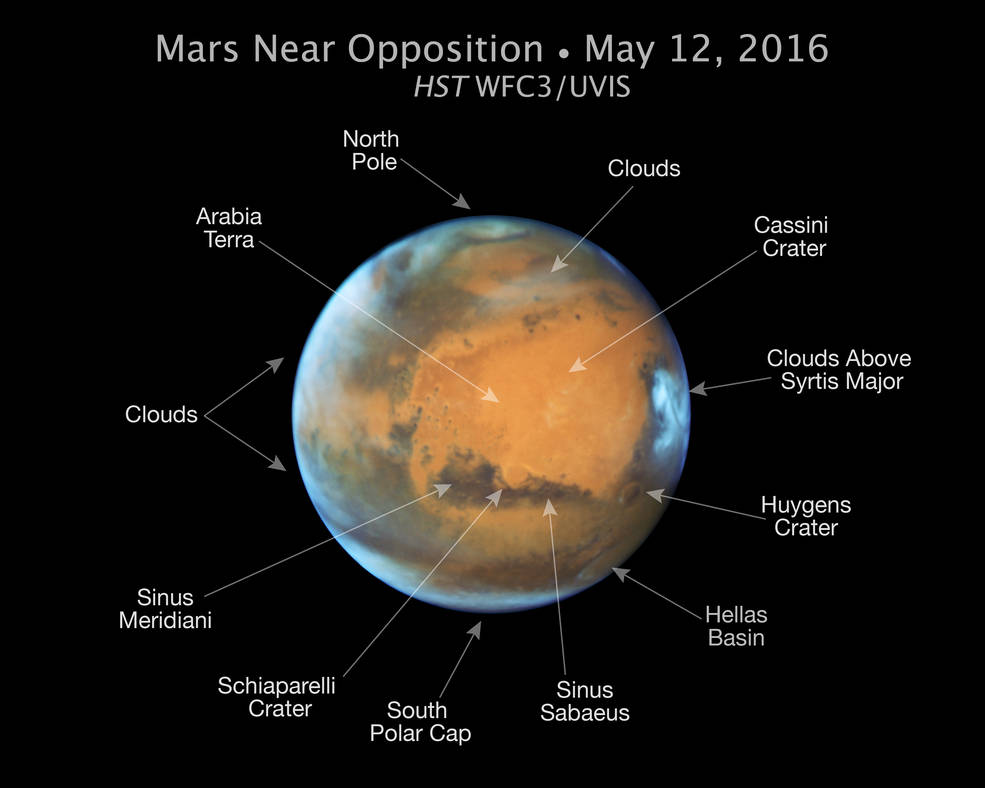
The band of dark material along Arabia Terra’s southern border, known as Sinus Meridiani in the west and Sinus Sabaeus in the east, formed from the erosion of ancient lava flows. The dark bedrock and coarse sand grains there reflect less sunlight than the finer grains present in other regions of Mars, giving it a distinctively darker appearance, according to NASA.
“An extended blanket of clouds can be seen over the southern polar cap,” NASA said in a statement accompanying the image released Thursday. “The icy northern polar cap has receded to a comparatively small size because it is now late summer in the northern hemisphere. Hubble photographed a wispy afternoon lateral cloud extending for at least 1,000 miles at mid-northern latitudes. Early morning clouds and haze extend along the western limb.”
NASA said the hemisphere of Mars imaged by Hubble on May 12 contains the landing sites of the agency’s Viking 1 lander, which reached the planet in 1976, and the place Mars Pathfinder touched down in 1997.
Meridiani Planum, where NASA’s still-operating Opportunity rover has explored since 2004, lies just to the north of the arrow in the above image pointing to Sinus Meridiani. Europe’s Schiaparelli lander is heading for a site nearby in October.
Martian surface features as small as 20 miles (about 30 kilometers) are resolved in Hubble’s May 12 image, NASA said.
Mars will reach opposition, when the planet and the sun are on opposite sides of the Earth, on May 22. Earth and Mars will be at their closest point in 11 years May 30, at a distance 46.8 million miles (75.3 million kilometers).
The elliptical orbits of the planets mean the opposition date is more than a week before Earth and Mars come closest to each other.
Mars oppositions occur about once every 780 days, and Hubble has observed the red planet at multiple oppositions, including in 1995, 1999, 2001, 2003, 2005 and 2007.
Email the author.
Follow Stephen Clark on Twitter: @StephenClark1.

